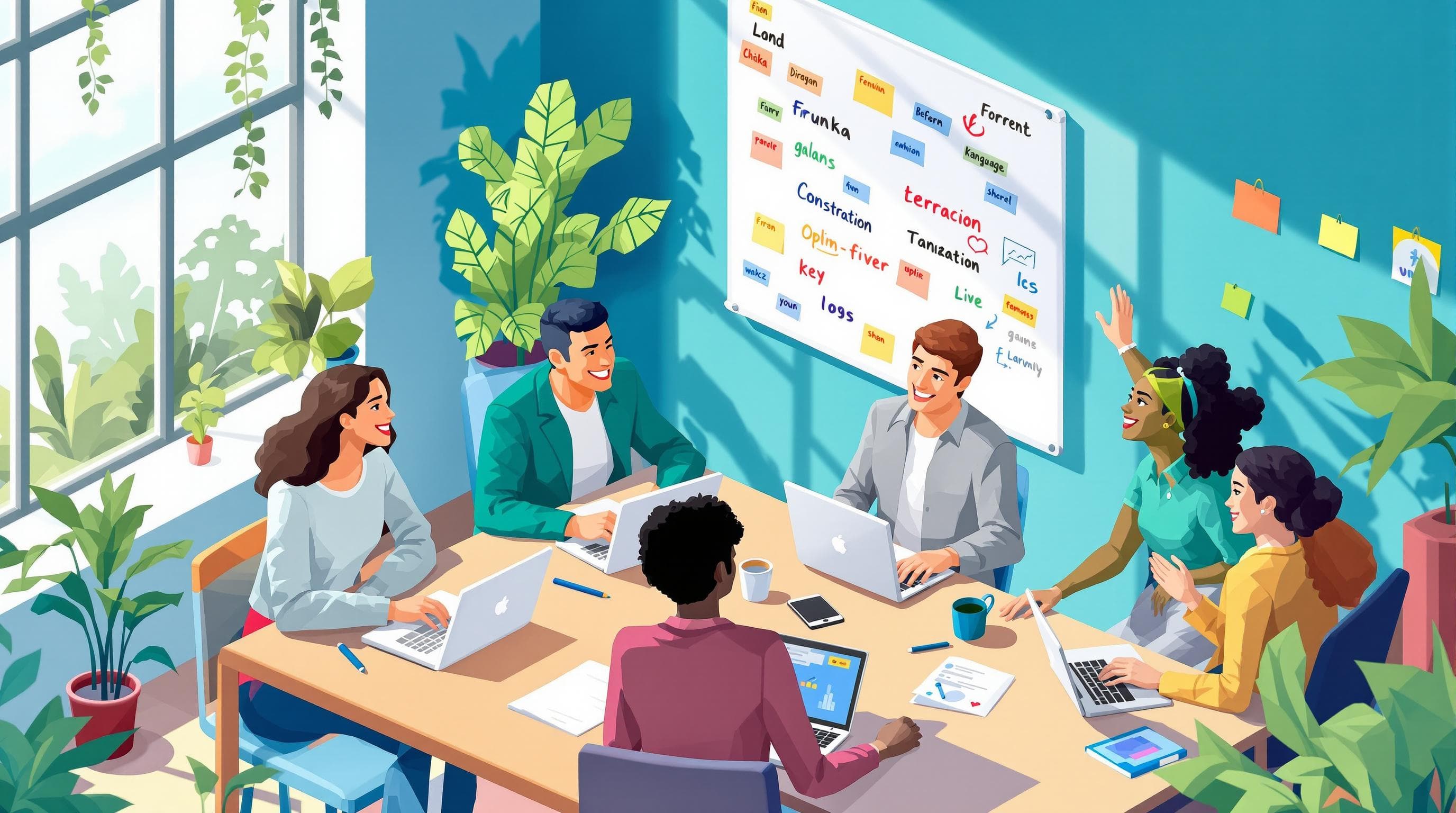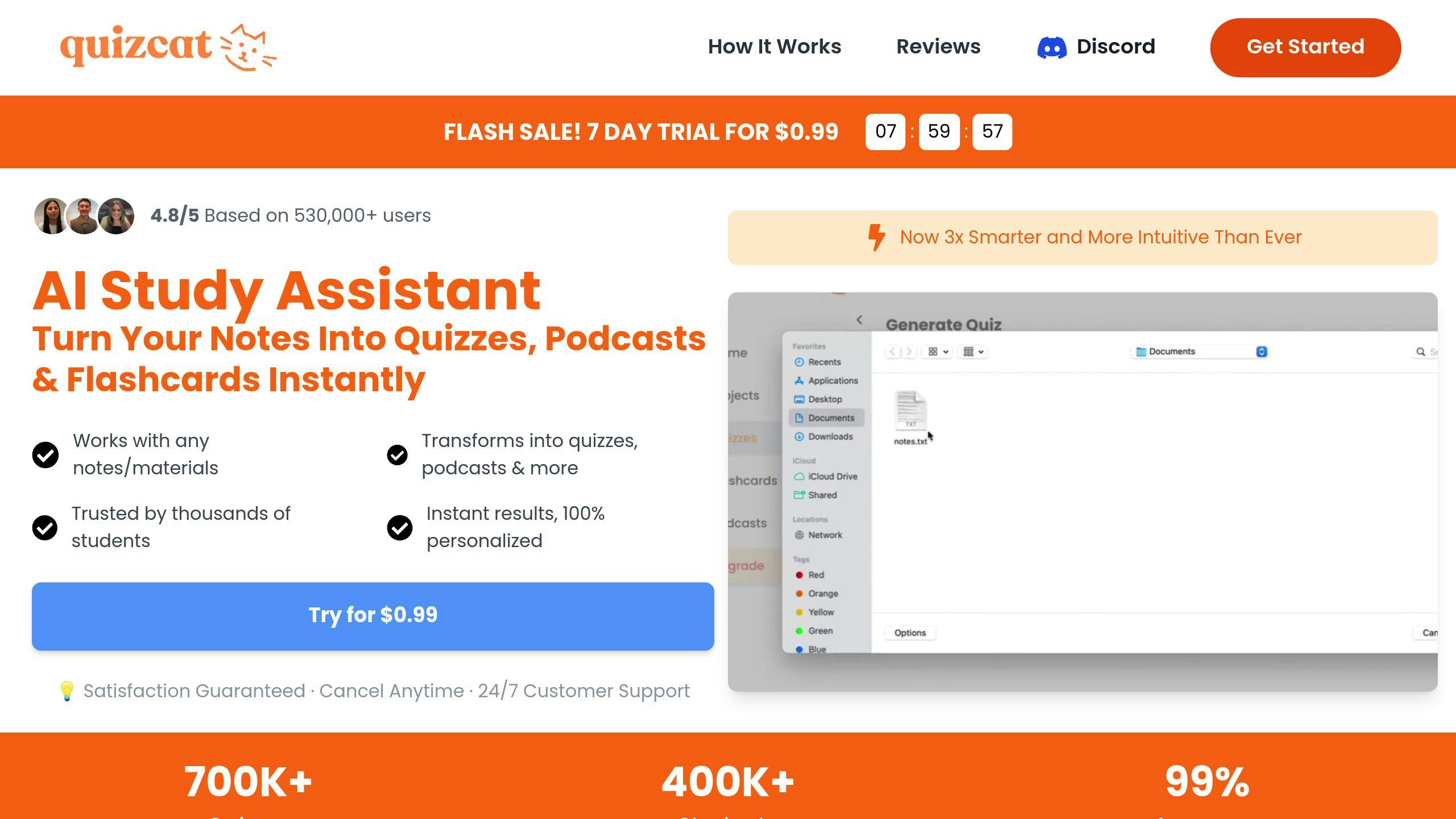
How Real-Time Translation Improves Group Projects
Real-time translation tools make group projects easier by removing language barriers. These AI-powered tools provide instant translations for text and speech, helping multilingual teams communicate clearly and work faster. Key benefits include:
- Clear Communication: Tools like Google Translate reduce misunderstandings and improve idea sharing.
- Increased Productivity: Instant translations save time and keep projects on track.
- Inclusivity: Everyone can participate equally, regardless of language.
Popular tools like Microsoft Translator and Lokalise integrate with platforms like Teams and Asana, making workflows smoother. Pairing automation with human input ensures accuracy, especially for technical or sensitive tasks. With training and the right tools, multilingual teams can collaborate seamlessly.
Collaborative Translation Tool for Businesses
How Real-Time Translation Functions
Real-time translation relies on AI and machine learning to enable instant communication across multiple languages.
Key Features of Real-Time Translation
Modern translation tools combine advanced features to ensure smooth communication. Speech-to-text technology converts spoken words into text, while text-to-speech generates natural-sounding audio from text. These systems work together to deliver translations that consider the context of conversations.
For example, DeepL Translator uses neural networks to provide translations that are both accurate and context-aware [3].
Here’s a breakdown of some core features:
| Feature | Function | Role in Group Projects |
|---|---|---|
| AI-Powered Context Translation | Interprets meaning and technical terms | Helps teams communicate clearly and accurately |
| Real-Time Speech Processing | Recognizes and processes spoken language instantly | Supports seamless verbal communication |
| Multilingual Support | Manages multiple languages at once | Encourages collaboration in diverse teams |
Examples of Real-Time Translation Tools
A variety of tools make multilingual collaboration easier. Amazon Translate uses deep learning to ensure translations maintain appropriate tone and style [3]. Microsoft Translator offers live speech and image translation, making it versatile for different communication needs [3].
Meanwhile, Lokalise integrates with project management platforms like Jira, Github, and Asana [1]. This integration allows teams to incorporate translation directly into their existing workflows, streamlining processes without disrupting productivity.
These tools are especially useful for teams tackling multilingual projects. Cloud-based platforms provide centralized access, ensuring that all team members can work together effectively, no matter where they are or what language they speak. Overcoming language barriers with these tools can lead to smoother collaboration and better results.
Advantages of Real-Time Translation in Group Projects
Better Team Communication
Real-time translation tools are changing the way diverse teams work together. By breaking down language barriers, these tools make it easier for team members from different linguistic and cultural backgrounds to communicate. For example, Google Translate's conversation mode allows bilingual discussions to flow smoothly without interruptions [3].
This clarity makes it easier for teams to share detailed ideas and provide feedback without confusion. Misunderstandings, which are common in multilingual settings, are minimized. As a result, team members can focus on contributing their expertise and driving the project forward.
Increased Productivity
Real-time translation tools help teams work faster by simplifying communication. Platforms like iTranslate and Papago provide instant translations for both text and voice [3].
| Feature | Benefit | Example Tool |
|---|---|---|
| Instant Translation | Removes delays in understanding | iTranslate |
| Automated Documentation | Reduces the need for manual input | Lokalise |
| Real-time Communication | Enables quick feedback and responses | Microsoft Translator |
With these tools, teams avoid delays caused by language differences. They also help integrate translations directly into daily tasks, keeping projects on track. Plus, these tools ensure everyone has a voice, regardless of their native language.
More Inclusivity and Accessibility
Real-time translation levels the playing field in group projects. Language skills are no longer a barrier to participation. Tools like Lokalise Messages make it possible to handle customer interactions across languages effortlessly [1]. This functionality also benefits internal teamwork, allowing non-native speakers to share their knowledge and ideas without hesitation. It creates a workspace where everyone can contribute equally.
sbb-itb-1e479da
Using Real-Time Translation Tools Effectively
Picking the Best Tool
When working on group projects, finding the right real-time translation tool can make all the difference. Look for tools that offer high translation accuracy, support the languages your team uses, and work seamlessly with platforms you already rely on - like Microsoft Translator's integration with Teams [3].
Some important features to consider include:
- API integration for smooth functionality with other tools.
- Multilingual support to cover all necessary languages.
- Cross-platform compatibility so everyone can use it, no matter their device.
- Cloud-based access for easy collaboration from anywhere.
Training Your Team
Make sure your team knows how to use the tools effectively. Hands-on training sessions that focus on key features can help everyone get up to speed. A well-trained team will be better equipped to handle tight deadlines and challenging tasks.
Combining Automation with Human Input
While AI-powered translation tools are great for speed, they aren't perfect. Pairing automated translations with human review ensures better accuracy and avoids misinterpretations. Use human input for critical tasks like:
- High-stakes communication.
- Technical documents.
- Marketing content that requires cultural sensitivity.
Once your team is comfortable with the tools and processes, integrating them with platforms like QuizCat AI can further improve collaboration and efficiency.
QuizCat AI: A Tool for Collaborative Projects

How QuizCat AI Supports Team Learning
QuizCat AI breaks down language barriers by turning project materials into interactive learning tools. It offers a variety of features designed to help teams stay on the same page:
- Interactive quizzes to test understanding of project requirements
- Flashcards for quick access to technical terms and key ideas
- Audio podcasts for reviewing materials while multitasking
- Mobile access for learning anytime, anywhere
These tools make sure every team member understands the core aspects of a project, no matter their native language. When combined with translation tools, QuizCat AI helps multilingual teams not only communicate better but also learn together seamlessly.
Combining QuizCat AI with Translation Tools
QuizCat AI works hand-in-hand with translation tools to make project materials easier to translate and share across languages. The process is simple:
- Upload your project materials to QuizCat AI.
- Use translation tools to localize the content.
- Share the translated materials to ensure everyone is on the same page.
This method allows teams to overcome language challenges without losing productivity. For example, translation tools like Wordly now serve over 3 million users across industries [2], showing how widely these solutions are being adopted for multilingual teamwork.
Real-Time Translation Tools in Group Projects
Real-time translation tools are changing the way teams work together, breaking down language barriers and improving collaboration. For example, Wordly has already helped over 1,500 organizations and 3 million users communicate more effectively [2].
"The ability to machine translate or bring in external translators during a time crunch is critical."
This insight from Specialized [1] highlights how translation tools can be a game-changer, especially when teams are under pressure to meet tight deadlines.
Beyond just breaking language barriers, tools like QuizCat AI add another layer by improving team learning and understanding. These platforms work together to create an ecosystem that supports clear communication and better knowledge sharing.
Here are a few tips to get the most out of real-time translation tools in your projects:
- Pick tools that integrate smoothly with your existing workflows.
- Double-check translations to ensure they’re accurate.
- Make sure everyone on your team knows how to use the tools effectively.
